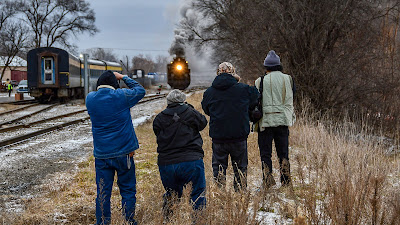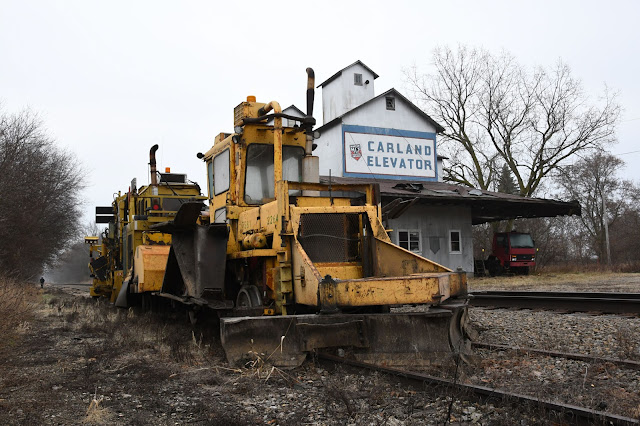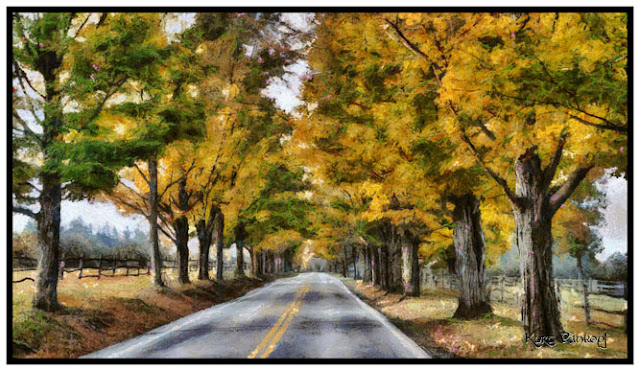I was out a few days earlier, in the wind, rain and dark and didn't do so well. But in that darkness, I did figure out a few things. As the famed philosopher Yoda said, "the greatest teacher, failure is".
So, aside from gaining some knowledge I also gained 5 minutes of daylight by returning two days later. And the weather was much better.
And back to the story: During the holiday season between Thanksgiving and New Year, the Huckleberry Railroad departs Crossroads Village a few times a night in 50 minute intervals.
There are multiple trains operated by the Village, two to three according to their website. The train I saw was #152. The #152 is just out of being renovated. The #152 was built in 1920 by the Baldwin Locomotive Works in Philadelphia as a 4-6-0 for the Alaska Engineering Commission. The original job for #152 was to help build the Alaska Railroad. After the completion of the Alaska Railroad and subsequent stops in California and Oregon, the Genesee County Parks and Recreation Commission purchased the engine in 1975. After a year of restoration, the train began service in Crossroads Village.
This image was taken at the midpoint of the of the ride for the paying riders.
ISO 6400, f/5.6, 1/250 sec, 200 mm, Manual, Auto ISO
NIKON D500 Ver.1.15/18.0-200.0 mm f/3.5-5.6
I used my recently discovered set up of using MANUAL mode with Auto ISO on. I wanted to keep the speed at 1/250 and the aperture at 5.6. I wanted to keep the trees relatively in focus. I checked my ISO prior to the train entering view and I saw it would be 10k or lower and I was OK with that. In this case for me, the method works. This train chasing thing could become a habit.

































